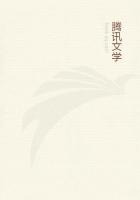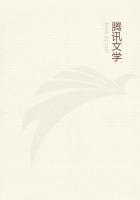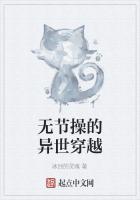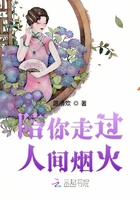Our beautiful wild honeysuckle, called naked (nudiflora), because very often the flowers appear before the leaves, has a peculiar Japanese grace on that account.Every farmer's boy's mouth waters at sight of the cool, juicy May-apple, the extraordinary pulpy growth on this plant and the swamp pink.This excrescence seems to have no other use than that of a gratuitous, harmless gift to the thirsty child, from whom it exacts no reward of carrying seeds to plant distant colonies, as the mandrake's yellow, tomato-like May-apple does.But let him beware, as he is likely to, of the similar looking, but hollow, stringy apples growing on the bushy Andromeda, which turn black with age.
>From Maine to Florida and westward to Texas, chiefly near the coast, in low, wet places only need we look for the SWAMP PINK or HONEYSUCKLE, WHITE or CLAMMY AZALEA (A.viscosa), a more hairy species than the Pinxter-flower, with a very sticky, glandular corolla tube, and deliciously fragrant blossoms, by no means invariably white.John Burroughs is not the only one who has passed "several patches of swamp honeysuckles, red with blossoms"("Wake-Robin").But as this species does not bloom until June and July, when the sun quickly bleaches the delicate flowers, it is true we most frequently find them white, merely tinged with pink.
The leaves are well developed before the blossoms appear.
Concerning azaleas' poisonous property, see the discussion under mountain laurel that follows.
RHODORA
(Rhodora Canadensis; Rhododendron Rhodora of Gray) Heath family Flowers - Purplish pink, rose, or nearly white, 1 1/2 in.broad or less, in clusters on short, stiff, hairy pedicels, and usually appearing before the leaves, from scaly, terminal buds.Calyx minute; corolla 2-lipped, upper lip unequally 2-3 lobed; lower lip 2-cleft; 10 stamens; pistil, the style slightly protruding.
Stem: 1 to 3 ft.high, shrubby, branching.Leaves: Deciduous, oval to oblong, dark green above, pale and hairy beneath.
Preferred Habitat - Wet hillsides, damp woods, beside sluggish streams, cool bogs.
Flowering Season - May.
Distribution - Newfoundland to Pennsylvania mountains.
A superficial glance at this low, little, thin shrub might mistake it for a magenta variety of the leafless Pinxter-flower.
It does its best to console the New Englanders for the scarcity of the magnificent rhododendron, with which it was formerly classed.The Sage of Concord, who became so enamored of it that Massachusetts people often speak of it as "Emerson's flower,"extols its loveliness in a sonnet:
"Rhodora! If the sages ask thee why This charm is wasted on the earth and sky, Tell them, dear, if eyes were made for seeing, Then Beauty is its own excuse for being."AMERICAN or GREAT RHODODENDRON; GREAT LAUREL; ROSE TREE, or BAY(Rhododendron maximum) Heath family Flowers - Rose pink, varying to white, greenish in the throat, spotted with yellow or orange, in broad clusters set like a bouquet among leaves, and developed from scaly, cone-like buds;pedicels sticky-hairy.Calyx 5-parted, minute; corolla 5-lobed, broadly bell-shaped, 2 in.broad or less usually 10 stamens, equally spreading; pistil.Stem: Sometimes a tree attaining a height of 40 ft., usually 6 to 20 ft., shrubby, woody.Leaves:
Evergreen, drooping in winter, leathery, dark green on both sides, lance-oblong, 4 to 10 in.long, entire edged, narrowing into stout petioles.
Preferred Habitat - Mountainous woodland, hillsides near streams.
Flowering Season - June-July.
Distribution - Uncommon from Ohio and New England to Nova Scotia;abundant through the Alleghanies to Georgia.
When this most magnificent of our native shrubs covers whole mountain sides throughout the Alleghany region with bloom, one stands awed in the presence of such overwhelming beauty.Nowhere else does the rhododendron attain such size or luxuriance.There it produces a tall trunk, and towers among the trees; it spreads its branches far and wide until they interlock and form almost impenetrable thickets locally called "hells;" it glorifies the loneliest mountain road with superb bouquets of its delicate flowers set among dark, glossy foliage scarcely less attractive.
The mountain in bloom is worth travelling a thousand miles to see.
Farther south the more purplish-pink or lilac-flowered CAROLINARHODODENDRON (R.Catawbiense) flourishes.This southern shrub, which is perfectly hardy, unlike its northern sister, has been used by cultivators as a basis for producing the fine hybrids now so extensively grown on lawns in this country and Europe.Crossed with the Nepal species (R.arboreum) the best results follow.
Americans, ever too prone to make the eagle scream on their trips abroad, need not monopolize all the glory for the cultivated rhododendron, as they are apt to do when they see it on fine estates in England.The Himalayas, which are covered with rhododendrons of brighter hue than ours, furnish many of the shrubs of commerce.Our rhododendron produces one of the hardest and strongest of woods, weighing thirty-nine pounds per cubic foot.
Rhododendrons, azaleas, and laurels fall under a common ban pronounced by bee-keepers.The bees which transfer pollen from blossom to blossom while gathering nectar, manufacture honey said to be poisonous.Cattle know enough to let all this foliage alone.Apparently the ants fear no more evil results from the nectar than the bees themselves; and were it not for the sticky parts nearest the flowers, on which they crawl to meet their death, the blossom's true benefactors would find little refreshment left.
MOUNTAIN or AMERICAN LAUREL; CALICO BUSH; SPOONWOOD; CALMOUN;BROAD-LEAVED KALMIA















